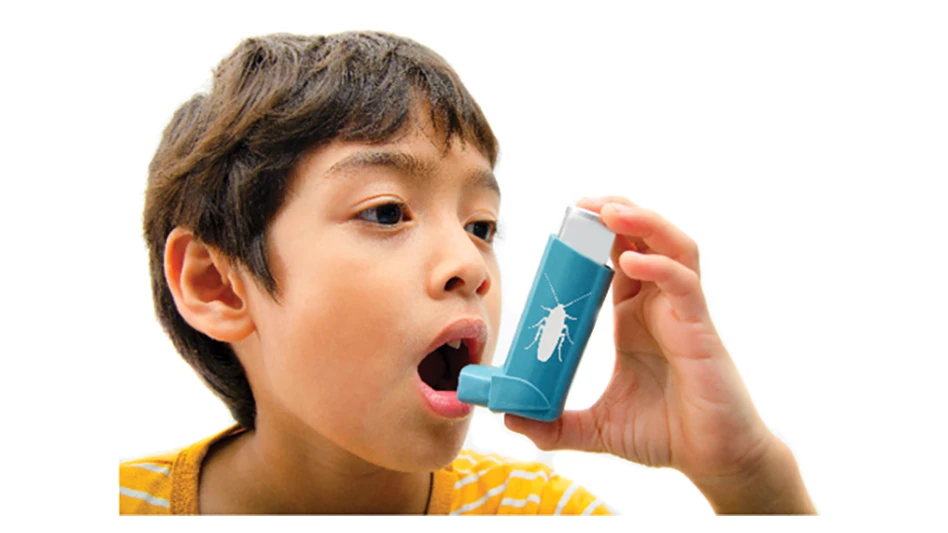 Tick-borne diseases have become more prevalent in recent years, but through advances in modern science, scientists have been able to identify illnesses with greater ease. The dissemination of medical research and access to it by the general public has instilled an environment of heightened awareness; it also has led to an even greater fear of certain short- and long-term chronic illnesses.
Tick-borne diseases have become more prevalent in recent years, but through advances in modern science, scientists have been able to identify illnesses with greater ease. The dissemination of medical research and access to it by the general public has instilled an environment of heightened awareness; it also has led to an even greater fear of certain short- and long-term chronic illnesses.
Most people associate tick-borne illnesses to Lyme disease, which is caused predominantly by the deer tick. Biologically, ticks are limited to rural areas. The expansion of home construction in rural areas has increased the likelihood that someone can become exposed to ticks or become infected by a tick-borne illness. In addition, the risk of co-infection (a situation in which a single tick bite can bring on one or multiple other diseases) has become greater than ever before. Advances in medicine have made it possible to distinguish one tick-borne disease from another; however, treatments and vaccines to prevent and/or eliminate these diseases lag behind.
The PMP’s Role.
As pest management professionals, we cannot give direct medical advice or diagnose our clients. However, we do have a responsibility to give our clients guidance when appropriate.
During an inspection, we should alert our clients to the presence of a tick in a backyard or on a commercial property. This would fulfill our obligation to our clients. Our services, in this respect, are a bridge, but ultimately it is the responsibility of the client to seek medical attention should he or she be bitten by a tick. It is appropriate to encourage our clients, especially if they have been exposed to ticks, to seek appropriate medical attention, such as an infectious disease specialist.
|
In the News: The medical outlook for treating tick-borne diseases continues to be positive, yet the discovery of newer bacterium, viruses and parasites produces a challenge to the medical community. Within the past two years, a new tick-borne disease called bourbon virus was discovered. This disease is linked to a family of germs called thogotovirus and is spread through mosquitoes and ticks in Africa and parts of Europe and Asia. The Heartland virus also was recently discovered in Missouri, and traced back to the Lone Star tick. The Heartland virus is categorized as a phlebovirus and can be found worldwide. The Heartland virus does have some similarities to ehrlichiosis, yet without a diagnostic test available, symptoms must develop in order to identify its presence. The Centers for Disease Control and Prevention says it is optimistic for a diagnostic test that can ultimately lead to vaccines or newer antibiotic treatments for these newly discovered diseases. As advances in this medical sector continue, diseases that were previously considered challenging may become more benign and curable at a faster rate in the coming years. |
Of course, many firms offer tick control as a service. Oftentimes, these are “add-on” services for a client on a regular program (like termites and bed bugs). As pest management professionals we can’t offer advice on the medical aspects of ticks, but we can offer advice when providing tick-management services.
On the Rise.
Tick-borne diseases are serious; they can turn deadly. Tick-borne diseases such as Lyme disease, babesiosis, anaplasmosis, Rocky Mountain spotted fever and ehrlichiosis have become more common, and will continue to in the coming years as suburbanization continues. This, combined with continued climate change, has triggered increased moisture levels and warmer seasons (April to September) throughout the year; these are all conducive conditions for ticks to thrive.
Additionally, the surge in deer populations and their close proximity to humans can, and do, ultimately allow greater exposure of ticks to deer and humans alike. These factors all contribute to an environment of increased reproduction of ticks throughout the United States. Overall distribution of ticks is highest in the Northeast United States, running down the Mid-Atlantic to the South. The Midwest generally has fewer ticks as pests because of its hotter and drier environmental conditions (which aren’t conducive to the reproduction of ticks). Each U.S. tick species (America, blacklegged, brown dog, Gulf Coast, Lone Star, Rocky Mountain wood and western blacklegged) all are vectors for the transmission of tick-borne diseases.
According to the Centers for Disease Control and Prevention (www.cdc.gov/ticks), tick-borne diseases can be acquired through bacteria, a virus or a parasite on the tick itself. Most infections occur during summer months, but they can occur at different times of year, depending on the overall climate in a specific area. Symptoms of tick-borne diseases include a rash, which may be pronounced and obvious, such as in the case of Rocky Mountain spotted fever (where it is acute); in the case of Lyme disease, the rash appears similar to a “bull’s eye” pattern. Additional symptoms include fever, chills, and aches and pains.
The onset of symptoms can range from immediate to as many as a few weeks. It is highly recommended that if you (or a client) suspect that you have been exposed to ticks and may have acquired a tick-borne disease, you seek appropriate medical care. Treatments are most effective when caught early. Vaccines against most tick-borne diseases either do not exist or have been discontinued because these illnesses are not prevalent in a high segment of the population. Lyme disease, as the most common tick-borne disease, is no exception; treatments are most effective in earlier stages. Many sufferers of Lyme disease do report post-treatment syndromes or what is commonly referred to as “chronic Lyme disease.” Research in this area of disease is ongoing, but a disease as serious as Lyme disease does warrant more attention as it is an illness that can cause severe damage to the heart, brain and nervous system. If a tick transmits a pathogen such as a bacteria, virus or parasite, then the prognosis can deteriorate. Nevertheless, statistics show the overall prognosis for someone who has been exposed and bitten by a tick is good, if caught early.
 The photo at left is of a pathognomonic erythematous rash in the pattern of a “bull’s-eye,” which manifested at the site of a tick bite on this Maryland woman’s arm, who’d subsequently contracted Lyme disease. Lyme disease patients who are diagnosed early, and receive proper antibiotic treatment, usually recover rapidly and completely. A key component of early diagnosis is recognition of the characteristic Lyme disease rash called erythema migrans. This rash often manifests itself in a “bull’s-eye” appearance, and is observed in about 80 percent of Lyme disease patients. Lyme disease is caused by the bacterium Borrelia burgdorferi, and is transmitted to humans by the bite of infected blacklegged ticks. Typical symptoms include fever, headache, fatigue and as illustrated here, the characteristic skin rash. If left untreated, infection can spread to joints, the heart and the nervous system. (Photo: CDC/ James Gathany) The photo at left is of a pathognomonic erythematous rash in the pattern of a “bull’s-eye,” which manifested at the site of a tick bite on this Maryland woman’s arm, who’d subsequently contracted Lyme disease. Lyme disease patients who are diagnosed early, and receive proper antibiotic treatment, usually recover rapidly and completely. A key component of early diagnosis is recognition of the characteristic Lyme disease rash called erythema migrans. This rash often manifests itself in a “bull’s-eye” appearance, and is observed in about 80 percent of Lyme disease patients. Lyme disease is caused by the bacterium Borrelia burgdorferi, and is transmitted to humans by the bite of infected blacklegged ticks. Typical symptoms include fever, headache, fatigue and as illustrated here, the characteristic skin rash. If left untreated, infection can spread to joints, the heart and the nervous system. (Photo: CDC/ James Gathany) |
Prevention.
Prevention, by far, is the best medicine concerning ticks. Simple preventive measures include avoiding areas known to harbor ticks, such as areas with high grass and leaves. Some additional preventive measures include the use of 20 to 30 percent DEET or a 0.5 percent permethrin spray. Clothing with permethrin contained within the fibers is commercially available and can help in repelling ticks that come in contact with the material. Bathing as soon as possible after being exposed to a tick-infested area, as well as tumble-drying any tick-exposed clothing on high heat, is helpful. Pets also need to be treated if infected. Pets can become a major source of tick entry into a home or business. All of these contributing factors occur on a case-by-case basis, but they can reduce and/or eliminate the overall likelihood of coming in contact with a tick.
The author is an associate entomologist with RK Environmental Services, Westwood, N.J.
WANT MORE?
Enter your email to receive our newsletters.

Explore the May 2015 Issue
Check out more from this issue and find your next story to read.
Latest from Pest Control Technology
- How to Get Rid of Odorous House Ants
- Massey Services Promotes Herndon to Director of Sales for Multi-Family Division
- NPMA Announces First Recipients of NPMA PRO Certified Credential
- Pestmaster of the Hudson Valley Acquires Catskill Animal Damage Control
- Photo Slideshow: Ant Identification Tips
- Video: Top 10 PCT Photo Contest Finalists
- UF/IFAS Study Reveals Boats as Perfect Vessels for Global Termite Spread
- Pest Control Consultants (Iowa) Earns Pinnacle Performance Award








